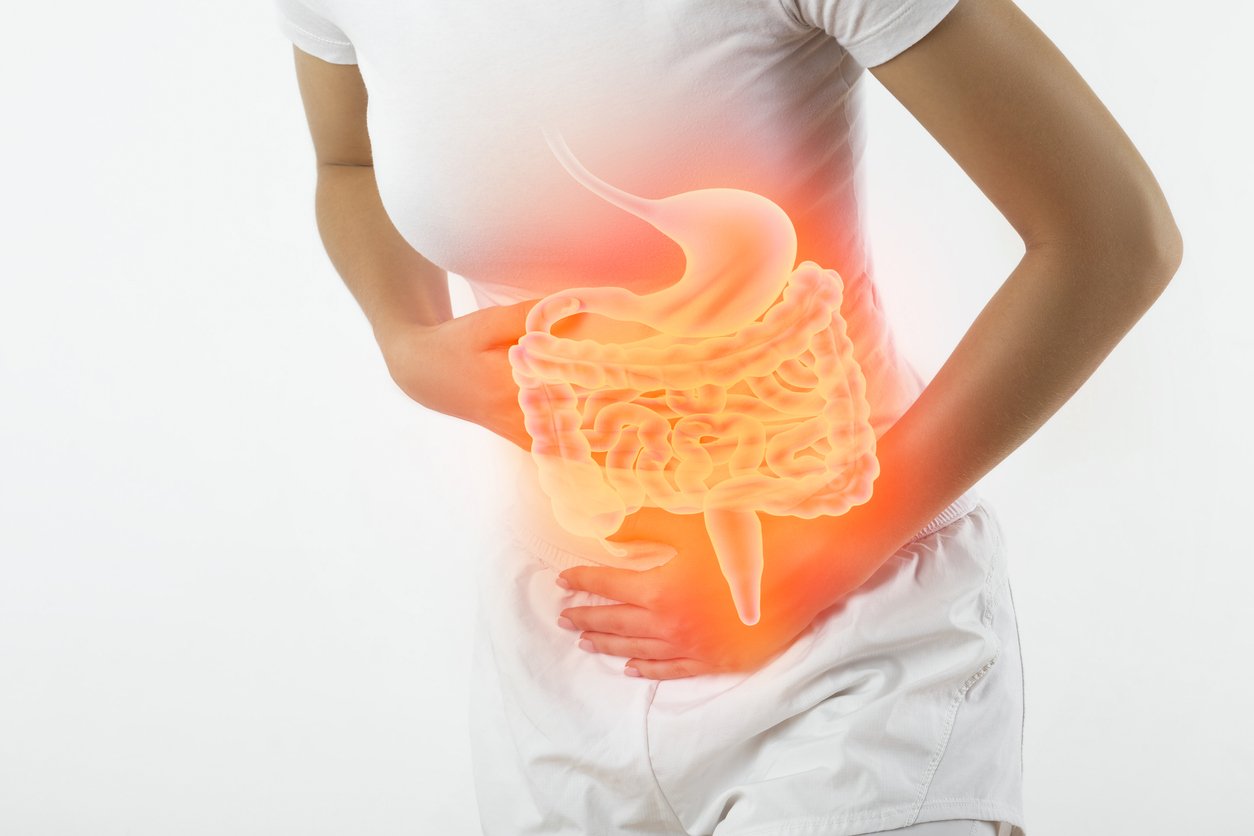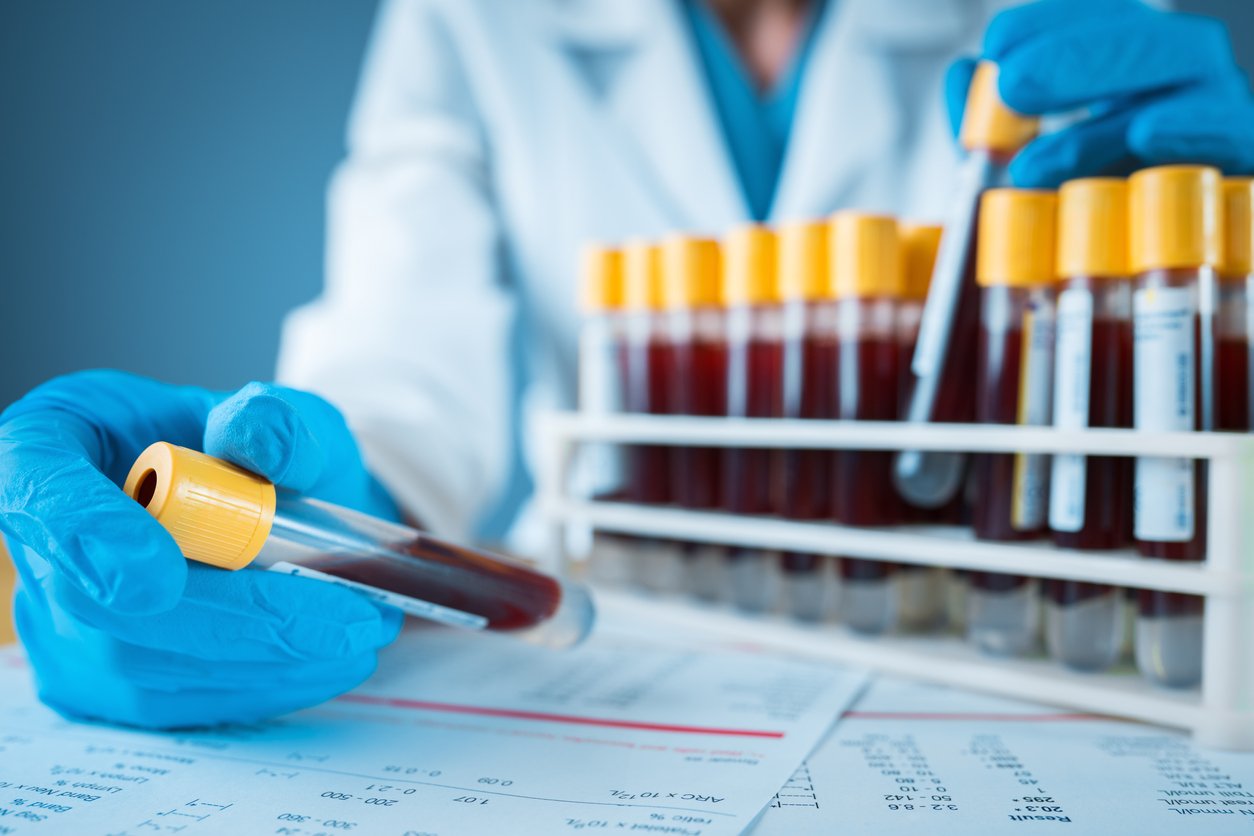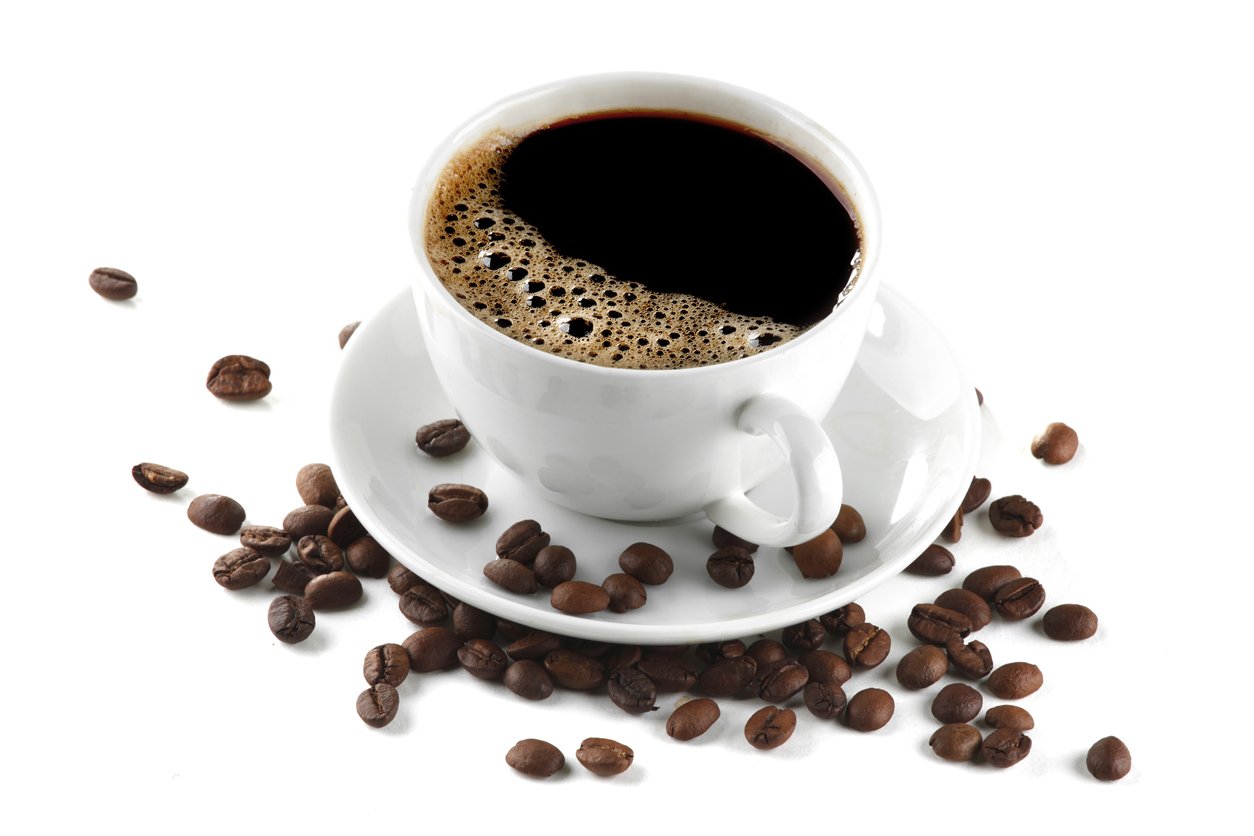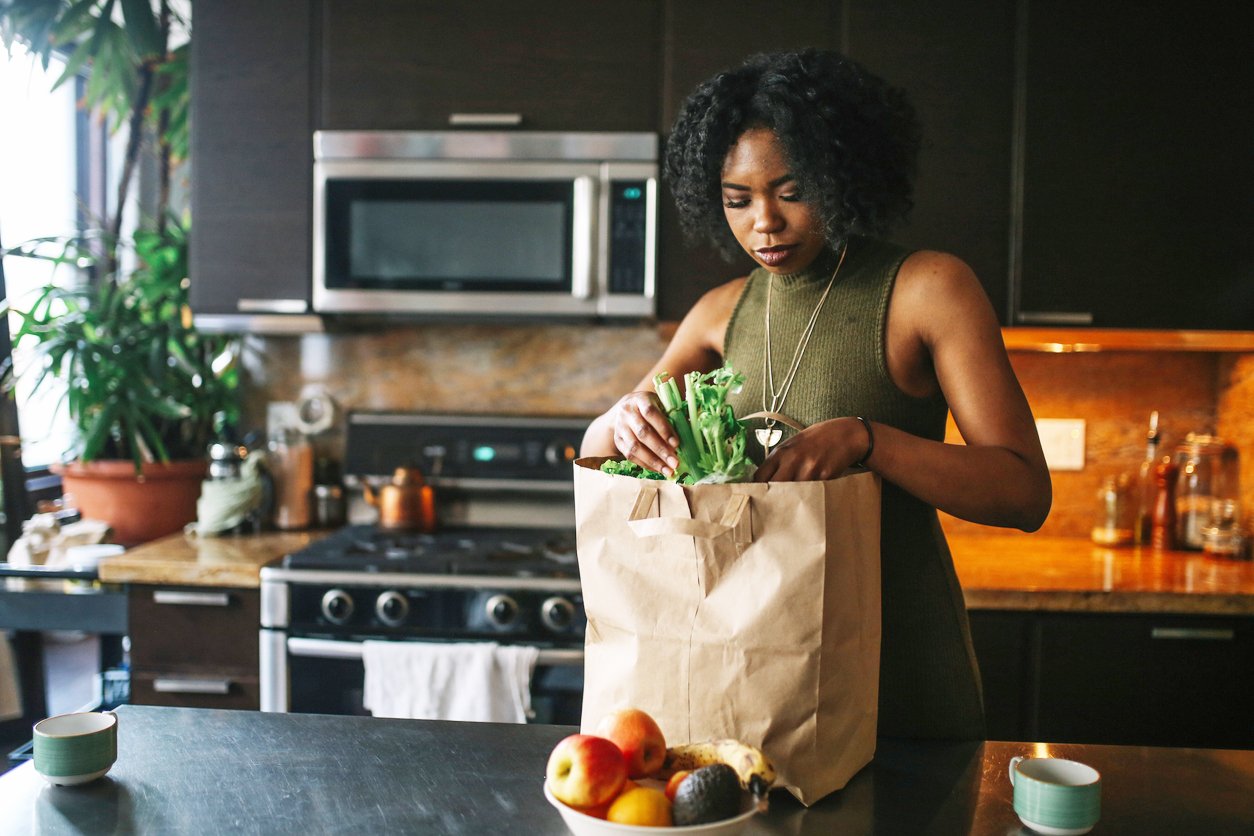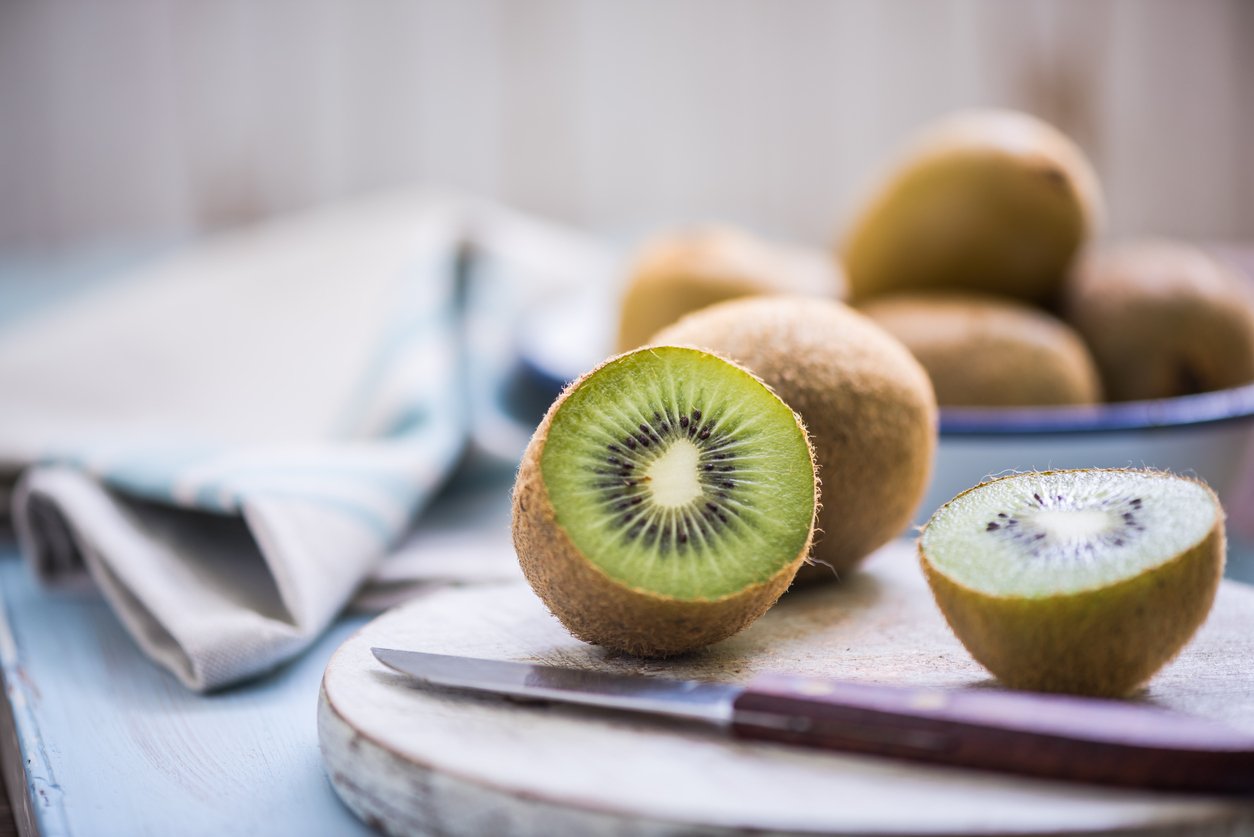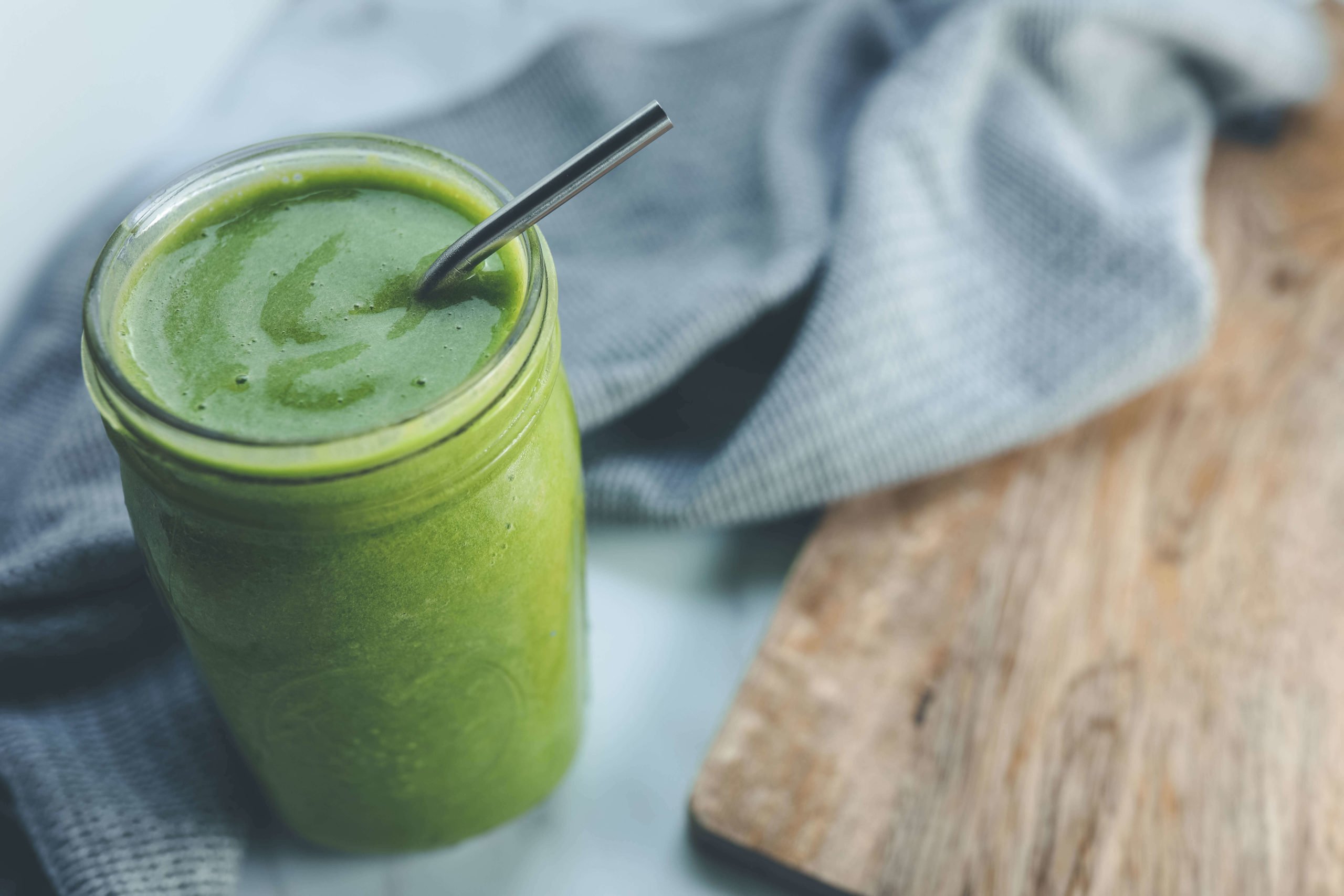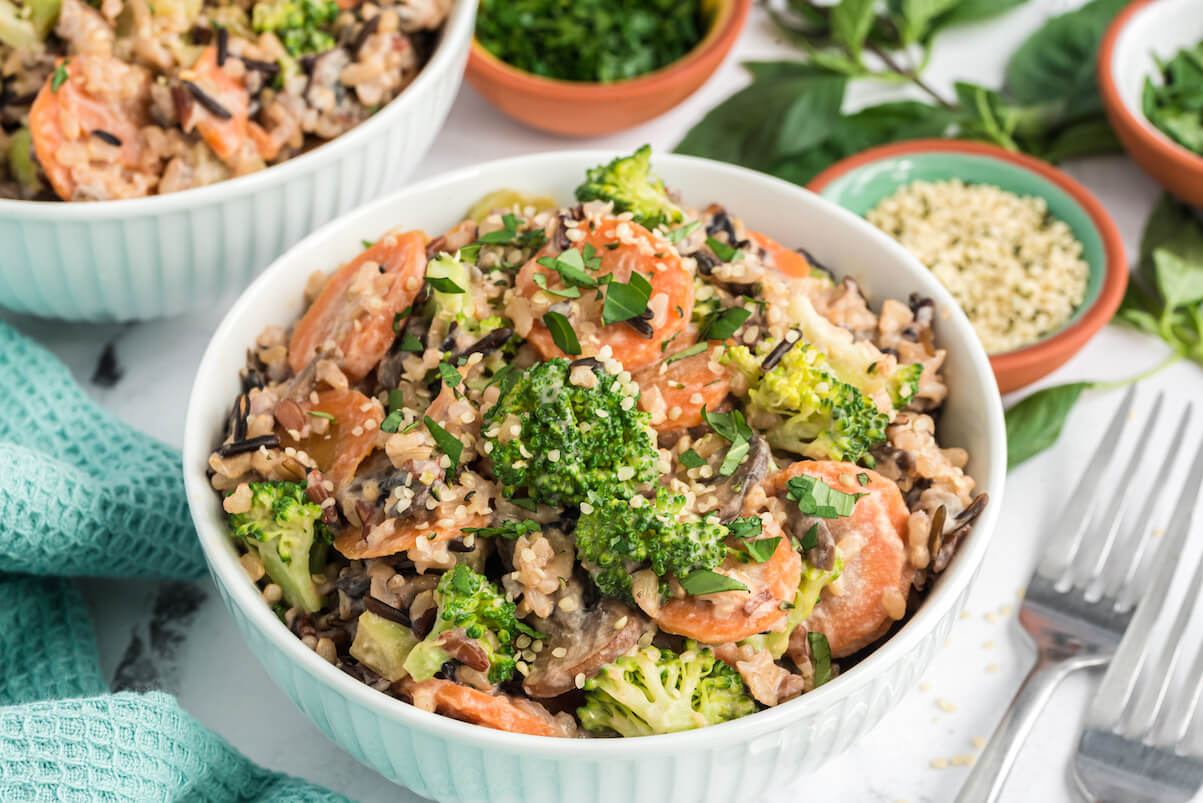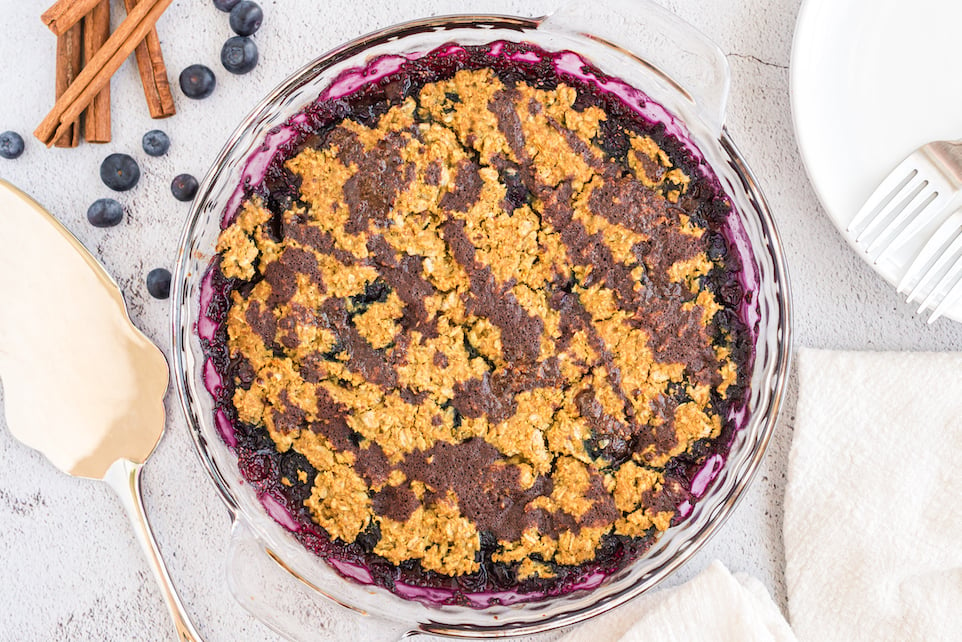Imagine that one day you notice that your car is acting funny. It’s sluggish, the steering wheel keeps tilting left, and the horn no longer works. You take it to the mechanic, who tells you that nothing’s wrong. The engine and transmission are in perfect working order; the suspension springs are brand new; and the horn, fuses, and wiring are all fine. But, you say, the car isn’t working right. Surely there must be something structurally, mechanically, or electrically at fault.
Nope, the mechanic insists. The car’s in great shape. Those performance issues are either all in your head, or totally inexplicable. If it makes you feel better, you could try a different brand of motor oil, or perhaps new wiper blades, or even replace the floor mats — who knows? Here’s my invoice for time and labor. See you next time.
If, in this imaginary scenario, you’re just about shaking with frustration, you may have a feel for what it’s like to have IBS.
No one likes to eat food and feel immediate discomfort afterwards, especially if that food is supposed to be good for you. Unfortunately for millions of people worldwide, this negative experience when eating is a daily reality due to a digestive disorder called irritable bowel syndrome (IBS).
And among the dozens of gastrointestinal disorders and diseases, IBS is one of the most puzzling. A hallmark of the condition is a lack of structural or biochemical explanations. In other words, when a patient asks what caused it, the only totally honest response their healthcare provider can usually offer is, “We don’t really know.”
Despite widespread confusion about IBS, it is not rare. About 11% of the world’s population is estimated to suffer from it, including one in five adults in the US. And women are 67% more likely to suffer from IBS than men.
So what exactly is IBS? How do you know if you have it? If there’s no clear cause, can lifestyle changes even help? And can a plant-based diet, specifically, reduce the negative impact of IBS? Or might all that fiber, or other compounds found in certain plants, actually cause harm?
What Is IBS?
IBS, also known as “spastic colon,” is a functional gastrointestinal disease characterized by noticeable changes in your bowel habits, such as periods of significant constipation, diarrhea, or fluctuations from one to the other that are out of the ordinary. Another symptom can be abdominal pain that isn’t caused by physical abnormalities of your digestive tract. In other words, it can show up with no obvious cause, which makes it challenging to diagnose. And there’s no standard treatment that works in every case.
It’s different from IBD — inflammatory bowel disease — because with IBS, there’s nothing structurally wrong with the colon or other parts of the gastrointestinal system. (Kind of like when a person is irritable, and you ask them if something’s wrong, they’ll snap, “No, nothing’s wrong!”) It’s also different from small intestine bacterial overgrowth (SIBO) in that there’s usually not a bacterial overgrowth, which is a separate diagnosis.
Physicians classify IBS cases into three types, based on the symptoms the person experiences the most. They are:
- IBS-C: Constipation-dominant
- IBS-D: Diarrhea-dominant
- IBS-M: Mixed presentation, meaning that symptoms can fluctuate between constipation and diarrhea
There can be other symptoms of IBS as well. These can include abdominal pain and cramping, relief from pain after defecation, abnormal bowel function and heartburn, as well as nausea, vomiting, or bloating.
One thing all these symptoms have in common is that they’re uncomfortable if not downright painful.
How Is IBS Diagnosed?
Given its multiple and varied forms of presentation and often nonspecific causes, IBS can be difficult to diagnose. Since there isn’t a definitive test for its presence, clinicians usually begin the process of diagnosis by looking out for the most common symptoms, and then eliminating other diseases and gastrointestinal disorders through a series of lab tests. (Picture a tiny Sherlock Holmes traveling down the intestinal tract with a magnifying glass, telling an equally tiny Watson, “Once you eliminate the impossible, whatever remains, no matter how improbable, must be the truth.”)
For example, someone may present with complaints of sudden changes in their bowel habits, which might include constipation and/or diarrhea, as well as feelings of bloating or abdominal pain in the absence of an obvious trigger. Their doctor would likely perform a physical exam and collect a family and medical history relevant to digestive diseases. From there, they may order various blood, stool, or imaging tests to begin a diagnostic process. The process of eliminating other causes when one isn’t obvious, as is often the case with IBS, is known as a “diagnosis of exclusion.” As you can imagine, this can take some time.
Symptom-based criteria for diagnosing IBS have been evolving since the late 1970s and the Rome IV Diagnostic Criteria for IBS was created in 1990 to provide diagnostic guidance. Rome IV (why does that name remind me of one of those medieval religious councils that met every hundred years or so to argue about who the heretics were?) outlines what an individual has to be experiencing in order for an IBS diagnosis to be reached. According to the tool, a person’s symptoms must be present for at least six months before an IBS diagnosis can be made. Additionally, physical exams and tests used to diagnose other conditions must show normal results.
Diagnostic tests that may be used by some health care practitioners include blood tests, stool tests, colonoscopies, and breath tests. (Yes, it’s possible to assess the relative concentrations of gases like oxygen, hydrogen, and methane from having patients breathe into what looks like a high-tech straw. If the results come back “cow fart” or “Hindenburg,” this may indicate a problem.)
If this sounds exhausting to you, I understand. IBS is one of the most confusing conditions to diagnose. But so many people are suffering from it that hopefully, we can shed some light on what is currently known about it, and more importantly, what you can do if you have it.
What Causes IBS & What Can You Do About It?
While we have a lot more to learn, it appears that IBS is caused by a combination of genetic, environmental, and lifestyle factors.
A case-control study published in 2015 concluded that after adjusting for sex and age of participants, independent predictors of IBS included irregular patterns of eating, not getting enough exercise, drinking a lot of tea (weird — I don’t recall any IBS-themed plots in Downtown Abbey or Bridgerton), and not getting quality sleep.
Furthermore, certain triggering or exacerbating factors related to IBS tend to be common once a person develops the disease. Diet patterns, along with stress, and women’s menstrual cycles, appear to be the most impactful.
Contaminants & Pathogens
You can also develop IBS as a result of an infection. Consuming contaminated food or water can lead to what’s known as post-infectious IBS. Common pathogenic culprits include species of Campylobacter and Salmonella, which alter the gut microbiome and may have lasting negative effects on digestive health. Research suggests that approximately one in ten cases of IBS may be post-infectious IBS.
The good news is that you can reduce your risk of post-infectious IBS by practicing good food hygiene at home, paying attention to new recalls posted at Recalls.gov (a fun website if you enjoy tales of deadly car seats, swing sets, boat motors, and frozen shrimp), and avoiding foods at high risk for contamination. These include alfalfa sprouts, pre-cut produce, uncooked dough, animal products like ground beef, poultry, oysters, raw fish, and eggs; open-air salad bars, and unpasteurized dairy products.
You may also want to implement some home water treatment practices to ensure that you have the most nourishing, low-risk water possible. While whole-house filters are available, there are also plenty of less costly methods for drinking water, such as point-of-use filtration systems.
Psychological Factors Involved in IBS
IBS used to be thought of as purely psychological in origin because there was no obvious change to the structure of the digestive system. This view no longer holds sway in mainstream practice, as it can be read as dismissive of the sufferer’s actual experience (as in, “The problem in your bowels is all in your head”) or perhaps worse, blaming the patient for their debilitating digestive symptoms.
But the truth is, while not all people with IBS symptoms have symptoms of psychological distress, there are links between psychological health and gut health that medical research is only now beginning to understand. IBS impacts (and is impacted by) the gut-brain axis, which refers to the bidirectional relationship between your gut microbiome and what’s going on in your brain.
One researcher fittingly called IBS “a combination of irritable bowel and irritable brain” to describe how intertwined the two are in this condition. Furthermore, the colon is partially controlled by the nervous system. (For an example of how this works — have you ever come home from a trip and suddenly needed to “go”? Sometimes, when your nervous system relaxes, bowel movements follow.)
Evidence also shows that psychological stress can have a substantial impact on the motility, secretion, permeability, and overall sensitivity of the intestinal tract. (Those “butterflies” you feel when you’re nervous may not have actual wings and antennae, but something real is going on down there.)
Anxiety & IBS
The prevalence of anxiety in patients with IBS is high, estimated to be around 44% in one study. This makes it especially important to practice habits that can help manage stress and anxiety, especially because when you have IBS, your anxiety and your digestive symptoms can be a two-way street. In other words, anxiety can worsen IBS symptoms, and IBS symptoms can worsen your anxiety.
To help manage anxiety, you can try things like mindfulness meditation, improving your sleep patterns, aromatherapy, building a strong social network, and practicing more regular exercise — including yoga. A 2016 review including six randomized controlled trials involving 273 people concluded that yoga can be a safe, supportive treatment for people with IBS.
Nutrition plays a big role in stress management as well, so avoiding refined carbohydrates and added sugar, fried foods and trans fats, food additives, as well as caffeine and alcohol, could be helpful. You might even find that adding certain herbs to your diet — like ashwagandha, lemon balm, holy basil, and curcumin — can help alleviate stress and anxiety.
Hormones
Another factor that may influence the development and progression of IBS is your gut hormones. Two small studies (here and here) have indicated that one gut hormone, vasoactive intestinal peptide, can be abnormally high in IBS sufferers.
Sex hormones — in particular, estrogens — also play a significant role in the physiology and, at times, the distress, of your GI tract. This is because there are sex hormone receptors along the GI tract. And because of the high prevalence of IBS in women, researchers have had ample opportunity to discover and study the correlation between IBS symptoms and hormonal status during menstrual cycle phases, pregnancy, and menopause.
Many women report worsening symptoms during menstruation, which is believed to be due to elevated prostaglandin levels — which contribute to muscle contractions in both the uterus and the GI tract.
Studies show that women often experience a decline in IBS after menopause, which could be good news if you’re a premenopausal woman who is currently suffering from it.
Biological Factors in IBS
There are also some sex-specific physical differences in the digestive tract that predispose women to the disease. The digestive tract isn’t typically thought of as a sex-specific part of the body, but it can be. There are significant differences between the anatomy of the female and male intestines. For example, the female colon is, on average, about 10 centimeters longer than the male one. And with that extra length, there are more twists and turns, which is one reason why women are more prone to bloating and constipation than men.
As well, women have internal sex organs that men do not have, including the uterus, the ovaries, and the Fallopian tubes, which compete for space with the female digestive tract. Women’s intestines are located in the same place as the female reproductive system, whereas the male colon is located on top of the abdomen where there’s lots of room and no competition for space with the reproductive organs. This is one of the reasons the colon empties more slowly in women than in men.
It’s also interesting to note that more women than men have IBS-C (constipation) and more men than women have IBS-D (diarrhea) — suggesting a further relationship between subtypes and sex hormones that we don’t yet understand. (Thyroid disease is also much more common in women than in men and can play a role in IBS.)
What can you do to adopt a lifestyle that helps balance your hormones naturally? Things like enjoying regular exercise, maintaining a healthy weight, spending more time (safely) in the sun, improving sleep patterns and stress levels, and removing toxic chemicals from your everyday routine, can all help. Eating a diet which minimizes or excludes dairy products, other animal foods, and ultra-processed items can also help support healthy hormone regulation.
IBS Foods
Approximately 50% of people with IBS report that their symptoms worsen after they eat. Why? The prevailing hypothesis is that an imbalance in gut bacterial communities — or “dysbiosis” — leads to activation of the gut immune system and potential low-grade inflammation.
Changes in gut bacteria are often identified among IBS sufferers. Many lifestyle and environmental factors can contribute to these changes — which you can read about here — but for right now, let’s focus on diet.
What you eat largely determines the composition of the communities of bacteria in your gut in general. The modern industrialized diet lacks nutritional diversity, failing to provide the array of nutrients, vitamins, and minerals your gut needs to thrive. This leads to a less diverse microbiome, which can trigger IBS in people predisposed to the condition.
Fiber and IBS
One such nutrient is fiber, which your gut microbiome generally loves.
The recommended daily allowances (RDA) in the US for total fiber intake for men and women aged 19-50 are 38 gram/day and 25 gram/day, respectively. But surveys show that only around 5% of Americans get the recommended amount of fiber. Most Americans get about 10-15 grams of fiber per day, due to a meager intake of fruits, vegetables, and other plants — the only foods that contain fiber.
But when it comes to IBS, the type of fiber matters a lot, too.
The body reacts differently to soluble and insoluble fiber. If you have IBS, then the nature of the IBS symptoms you’re experiencing at any given time determines whether you should lean into soluble or insoluble fiber in your diet. Why? Because soluble fiber slows things down in the digestive tract, helping with diarrhea, while insoluble fiber can speed things up, alleviating constipation.
Soluble Fiber
Soluble fiber is hydrophilic, which means that by attracting and absorbing water, soluble fiber removes excess fluid, which is how it helps decrease diarrhea. The American College of Gastroenterology recommends the use of soluble fiber supplements, like psyllium, as an inexpensive and effective treatment in IBS, but there are also abundant food sources.
If you’re primarily experiencing IBS-D, then it’s a good idea to increase your intake of soluble fiber-rich fruits and vegetables. These include apples, oranges, pears, strawberries, blueberries, peas, avocados, sweet potatoes, carrots, turnips, oats, beans, and barley.
Insoluble Fiber
On the other hand, insoluble fiber does not dissolve in water, so it stays intact as it moves through your digestive system. It can be helpful if you’re experiencing IBS-C, because it adds bulk to the stool and helps get things moving. In this case, it might be a good idea to increase your consumption of the foods that are rich in insoluble fiber, such as: zucchini, broccoli, cabbage, leafy greens, cauliflower, blackberries, flax seeds, chia seeds, and whole grains.
An important note, though: Some insoluble fibers, like wheat bran, may make abdominal bloating and pain worse for some people with IBS, particularly those experiencing significant diarrhea. For a sense of how this might work, imagine an open wound. Applying a soft and nourishing gel to it might feel comforting (think soluble fiber), but cleaning it with a scrub brush (think insoluble fiber) might not. While hygiene is good and important, and insoluble fiber plays an important role in cleaning things out, too much “scrubbing action” could be irritating to already inflamed tissues, at least for some people suffering from IBS-D.
The more fiber of any type that you ingest, the more water you need in order to move the fiber through your digestive system. Water helps break down food and assists your body in both absorbing nutrients and getting rid of toxins. And if you haven’t been used to eating much fiber, or drinking much water, don’t worry — you can still make a big difference if you start making changes now. In fact, it only takes a few days following a change in your diet for the microbe population in your gut to change in response.
Identifying Trigger Foods
Additionally, approximately 84% of IBS patients report that their symptoms are triggered by at least one particular food item. Identifying trigger foods, so that you can exclude them from your diet, can help ease symptoms, reduce inflammation, and support healing in the gut. In some cases, a food sensitivity or intolerance may also be a factor. A food sensitivity differs from a food allergy in that it doesn’t cause an immune response.
The usual recommendation for dealing with a food that triggers IBS is to eliminate the food at least temporarily. If it isn’t an especially healthy food, you may be best off leaving it out for good. But if it is a nutritious food, then you may want to gradually add it back, in small intervals, to give your microbiome a chance to get used to it so that you can tolerate it. As gut health MD Will Bulsiewicz points out in his brilliant book Fiber Fueled, the gut is a muscle and can be strengthened through challenge the same way you can grow biceps and glutes. And of course, if you can’t get to the point of toleration, it’s probably best to avoid the trigger food altogether — much like working out at the gym is actually counterproductive if doing so worsens an injury.
Which kinds of foods should you consider eliminating or watching out for when it comes to IBS? Let’s cover these next.
Worst Foods for IBS
IBS is a disorder that doesn’t present the same way or have the same triggers in every person. While generalized advice may be the place to start, it’s important to listen to your body and experience, and to work with your healthcare provider to come up with a food regimen that suits your situation.
Dairy
Lactose is the primary sugar in dairy products. An association between worsened IBS symptoms and lactose has been seen in people with lactose intolerance — which is very common around the world. Lactose intolerance generally begins to occur after age two or three years, when children stop relying on mother’s milk as their primary source of nutrients. This is when human bodies often stop producing lactase, the enzyme needed to digest lactose. As a result, a lactose-free diet is often recommended for IBS patients to see if it helps ease symptoms. And for many people, IBS may also be related to a type of milk protein, called A1 β-casein, which makes most dairy products problematic even if they are lactose-free.
Gluten
While IBS isn’t the same as Celiac disease (caused by an immune reaction to eating gluten, a protein found in wheat, barley, and rye), some non-Celiac IBS patients do better without gluten and may be advised to eat a gluten-free diet.
FODMAPs
While a variety of dietary interventions can provide relief for different people, the top dietary recommendation for IBS patients is what’s called a low-FODMAP diet, which has nothing to do with cartography. FODMAP stands for fermentable oligo-, di- and monosaccharides, and polyols (thank goodness for acronyms!), which are types of short-chain carbohydrates that are poorly absorbed and can trigger symptoms in people with IBS. When you eat FODMAPs, they’re not as well-digested by the time they reach your small intestine as other types of carbohydrates, and while this is not a problem for most people, it can cause symptoms for those with especially sensitive digestive tracts.
The problem is, FODMAPs are found in many foods that you may be used to eating regularly, and which are highly nutritious — such as garlic, onions, apples, and legumes. Other FODMAP-containing foods include wheat and some dairy products. The restriction phase of a low-FODMAP diet completely eliminates these foods. Generally, you’d follow this diet for a minimum of 3-4 weeks, which is usually long enough to figure out if removing the entire class of foods helps you feel better. After this period, if you have seen improvement in symptoms, you can carefully start reintroducing FODMAP-containing foods, one at a time, to see which ones trigger symptoms.
One reason the restriction phase of the low-FODMAP diet should be temporary if possible is that it can eliminate many of the healthiest foods on the planet. Some people on a low-FODMAP diet make the mistake of eating a lot of meat and low-FODMAP dairy products, which have been shown to contribute to inflammation — which can, in turn, fuel many serious health conditions and diseases — potentially including IBS.
For a chart showing foods that are considered high-FODMAP and low-FODMAP, click here.
Fatty and Oily Foods
Many IBS patients report that eating foods high in fat triggers symptoms. This is likely because a high intake of fat is associated with exaggerated movement in the colon during eating, as well as increased sensitivity in the digestive system. Individuals with IBS may want to limit fat intake to no more than 40-50 grams per day. This comes out to 360-450 calories, which means a person who consumes 1,800 calories per day would get between 20% and 25% of their total energy from fat.
Keep in mind that responses to fat may differ between individuals, research on fat and IBS is limited, and that there’s a difference between healthy and unhealthy fats in the diet. If you’re going to try cutting down on fats to see if it helps with IBS symptoms, start by avoiding the fats that tend to be the most problematic to your health overall, such as fried foods, processed oils, and foods high in saturated fats such as dairy, eggs, and red meat.
Caffeine
While many people enjoy the bowel-stimulating effects of a cup of coffee in the morning, this can be unpleasant for someone with IBS. Caffeine ramps up activity in your colon and increases the secretion of gastric acid. People with IBS-D (the type of IBS that tends to accompany diarrhea) will suffer the most. If your IBS symptoms include diarrhea, it’s recommended to limit intake to no more than, at the most, three caffeinated beverages per day.
Alcohol
Drinking alcohol can eventually lead to damage of the gut lining, which can disrupt intestinal motility (a fancy word for how well your gut moves the food down the digestive assembly — or is it disassembly? — line). Some research suggests that the effects of alcohol on IBS symptoms can be worse for people who have IBS-D. If you enjoy the occasional cocktail, this may not be a huge problem, as most studies have found more of an association between binge drinking and symptoms like abdominal pain and diarrhea than with light drinking. It’s generally advised for IBS sufferers to follow guidelines of no more than one drink per day for women, or two drinks per day for men, and to have at least two alcohol-free days per week. But if IBS is a problem for you, then you have one more good reason to avoid alcohol entirely.
Spicy Food
Many people with IBS report that eating spicy foods can worsen their symptoms, especially causing more acid reflux and abdominal pain. If spicy foods cause issues for you, it’s recommended to minimize or avoid them in your diet. (And if not, then keep in mind that spices are some of the healthiest foods on the planet, for those who can tolerate them well.)
Is a Plant-Based Diet Bad for People with IBS?
Now that we’ve covered some of the worst foods for triggering IBS symptoms, you might be wondering whether the plant-based diet we regularly recommend can offer some benefits. Or if, in the case of IBS, it could possibly be detrimental.
The answer is that it depends.
While whole plant foods have a lot to offer health in general (helping to prevent most of the major chronic illness conditions of our times), some research suggests that eating a lot of some high fiber plant foods may worsen IBS symptoms for some people. The 2015 case-control study mentioned before, which looked at lifestyle factors that might impact IBS, also found an association between increased consumption of fruits, vegetables, and legumes and increased incidence of IBS.
Before you empty your fridge of carrots, your counter of apples, and your pantry of split peas, however, be aware that this was a very small study (fewer than 80 participants in each group). Also, case-control studies can’t establish causation, and it’s possible that those with IBS were trying to eat more plants to improve their condition, rather than that the increase in produce and legumes caused it.
Currently, much of the attention to a dietary approach to IBS is on FODMAPs and the low-FODMAP diet. And some people do find this helpful in alleviation of immediate symptoms. But as mentioned above, a low-FODMAP diet is meant to be a temporary solution because it’s highly restrictive and eliminates many healthy, plant-based foods. Plus, following a low-FODMAP lifestyle can eventually decrease gut bacteria diversity, which can further exacerbate digestive problems if followed long-term. This can also lead to only being able to tolerate a certain number of foods, which could leave you lacking in important nutrients.
Why Some People Struggle with Eating More Plants
So how do you account for people who do have a hard time with plant-based foods — and more specifically with large quantities of insoluble fiber — when they have IBS? The best approach is generally not to limit healthy but potentially triggering foods indefinitely, but rather to seek to address root causes. And in this light the type of fiber may make a substantial impact on IBS symptoms for some people. While soluble fiber seems to be beneficial for IBS in general, insoluble fiber could be problematic for those with IBS-D (who are prone to diarrhea). Paying attention to the types of fiber in the diet, and whether IBS symptoms worsen or improve as a result of eating specific foods, may be an important step on the path to reducing irritation and nurturing resilience.
From there, the focus can be on how to gradually reintroduce healthy, fiber-rich foods without triggering IBS discomfort. With an intentional approach to restoring healthy gut function, you can identify your threshold for a particular food and slowly increase your intake. Over time, that threshold may expand.
Feeding Your Gut Microbiome
While there have been few studies specifically examining the effects of a plant-based diet on IBS, the evidence we do have appears to be favorable. Plus, there is abundant evidence that plant-based diets have a beneficial effect on the human microbiome and gut health. And there are plenty of reasons for that.
For example, fibers — non-digestible carbohydrates, found exclusively in plants — are known to consistently increase populations of “good bacteria”, such as Ruminococcus, E. rectale, and Roseburia, and reduce the problematic Clostridium and Enterococcus species. Polyphenols are also abundant in plant foods, and have been shown to increase colonies of Bifidobacterium and Lactobacillus bacteria.
In short, fiber helps to feed the good guys.
This is why, if you do adopt a low-FODMAPs diet for a time, and get some relief from IBS, a gradual increase in fiber-rich plant-based foods is generally recommended. A slow increase can help your intestinal muscles gain tolerance and better respond when these foods are consumed.
Specific Foods That May Help with IBS
There are a few specific foods that have been studied in relation to IBS and may be helpful for IBS management. Keep in mind that results may vary depending on the subtype of IBS that an individual has.
Some of the foods that have been studied for their positive effects on IBS symptoms include:
- Kiwi: In one study, a four-week “kiwifruit intervention” among people with IBS-C found that two kiwis per day for one month improved bowel function without worsening symptoms.
- Peppermint: Many studies have found that peppermint oil is effective for reducing IBS symptoms. While the longest study was only 12 weeks, researchers suggest that the benefits of peppermint may last for up to one month after stopping, as a result of lasting positive changes in the gut microbiome. The studies have used peppermint oil capsules, so they could be matched with placebo pills. What about peppermint tea? As far as we know, it’s never been tested. But a quarter cup of fresh peppermint leaves has as much peppermint oil as some of the capsule doses used in the studies, and provides additional benefits that you don’t get from just the oil. Plus, you can grow mint right on your window sill. And it tastes pretty good, too!
- Cayenne pepper: Although some IBS-sufferers find that they are sensitive to spicy foods, others find that cayenne can be beneficial. It turns out that hot pepper compounds have been observed to offer analgesic effects. Cayenne pepper, encapsulated in enteric coated pills (which keep the pills’ contents from entering the digestive tract until after they leave the stomach), has been shown to be more effective than placebo for improving chronic indigestion as well as abdominal pain and bloating among people with IBS.
- Flax seeds: Flax seeds may be particularly helpful in managing constipation, bloating, and abdominal pain in IBS-C. A 2012 randomized controlled trial of 40 IBS patients found that two tablespoons of ground flaxseeds per day, for four weeks, may be helpful in reducing symptoms.
More research is always helpful, and not everyone responds in the same way, but it seems that the inclusion of these foods in a healthy diet may offer benefits for many people with IBS.
Recipes to Help with IBS
The three recipes below can be customized to your needs, and are easily adapted for people wanting to eliminate high-FODMAP foods or to experiment with a plant-based anti-inflammatory diet.
The Anti-Inflammatory Green Smoothie is exactly what the title suggests — an anti-inflammatory powerhouse! If you’re currently omitting mango because it made the high-FODMAP list, you can easily substitute papaya, kiwi, or orange in its place.
The Wild Rice, Mushroom and Baby Broccoli Salad is not only delicious, but also packed with vitamins, minerals, phytonutrients and low-FODMAP fiber to help beat inflammation and symptoms associated with IBS.
Finally, Blueberry Chia Oat Crumble — is it a dessert, snack, or breakfast? It’s all three of those things and more with its nutrient-powered low-FODMAP ingredients. With these three dishes, feel good knowing that you’re feeding your gut tasty plant-based food that will help it to heal and help you to thrive.
1. Anti-Inflammatory Green Smoothie
With the combination of greens, lemon, pineapple, flax, and ginger, this smoothie is an anti-inflammatory win! If eliminating high-FODMAP foods is in your immediate food plan, simply swap papaya, kiwi, or orange (low-FODMAP foods) for the mango (a high-FODMAP food). The remaining ingredients are low in FODMAPS yet good sources of fiber and phytonutrients, which may be helpful in preventing IBS symptoms.
2. Wild Rice, Mushroom, and Baby Broccoli Salad
This plant-based dish is packed with anti-inflammatory and fiber-rich ingredients thanks to its three main components. You can easily make it low-FODMAP by choosing oyster mushrooms over another type of mushroom and omitting the onion powder. If you really want that onion flavor, consider adding the green part of green onion or chives at the end of cooking. This salad is delicious and even better the next day as the flavors have a chance to develop!
3. Blueberry Chia Oat Crumble
Boost your soluble fiber and nutrition without boosting high-FODMAP ingredients that could potentially trigger IBS symptoms. Blueberry Chia Oat Crumble includes phytonutrient-charged blueberries, omega-3-rich chia seeds, and soluble fiber-filled oats. All three ingredients can help to reduce inflammation in your gut by encouraging healthy gut bacteria to thrive. This dish is tasty enough to enjoy as a dessert, and can also easily serve as a sustainable snack or breakfast since it’s so nutrient-dense!
We Have a Lot Still To Learn About IBS — But We Know Some Big Things That Can Help
IBS is a common gastrointestinal disorder that can show up as changes in bowel habits, like constipation and diarrhea, as well as symptoms like bloating, gas, and pain. Whether someone has IBS-C, IBS-D, or IBS-M — irritable bowel syndrome that either manifests with a dominant symptom of constipation, diarrhea, or a mix of both — factors like stress levels, hormones, and diet can have a major impact on the development and management of the condition.
Diet is of particular interest with IBS because there’s such a strong association with symptoms after eating. In the early stages of IBS, food elimination tests can be helpful to identify what foods may be the most problematic, and which ones may be slowly reintroduced over time. A low-FODMAP diet is often recommended in the short term, but this type of diet isn’t recommended as a permanent solution. For long-term maintenance, an emphasis on soluble fiber consumption can be helpful in managing IBS symptoms, whereas insoluble fiber may need to be limited and added back over time as tolerated.
Because IBS seems to depend so much on microbiota, ultimately, the best advice is to work with your healthcare professional, particularly someone well versed in gut health and nutrition. If you don’t have one already, https://plantbaseddocs.com/ is a great place to search for a provider near you.
Tell us in the comments:
- Do you know anyone with IBS, or do you have this condition? What has your experience been like?
- Have you ever tried a low-FODMAP diet for digestive issues like IBS? Was it helpful?
- Have you ever noticed digestive side effects of certain lifestyle habits or experiences, like stress, diet, or sleep?
Feature Image: iStock.com/MoyoStudio

